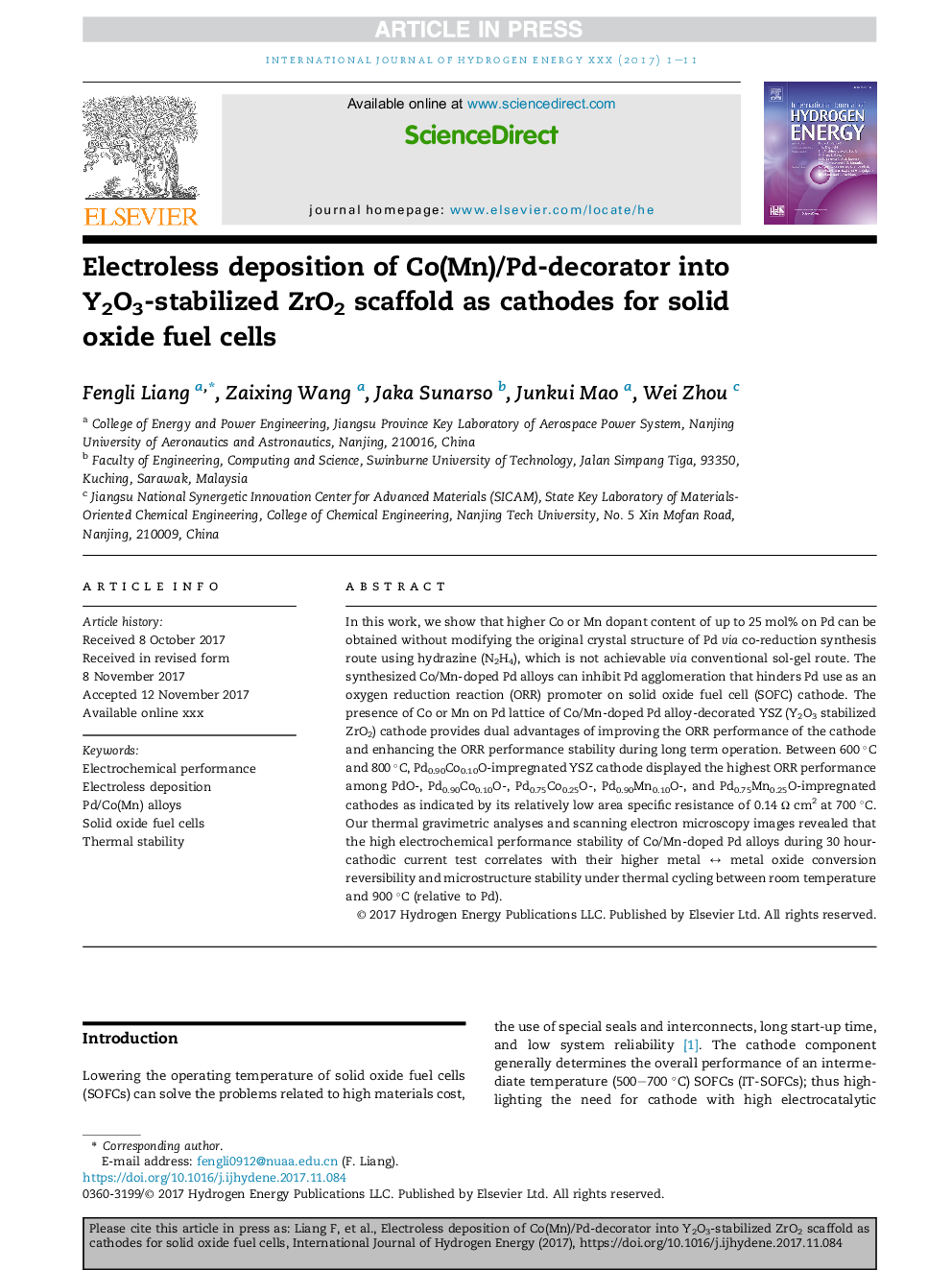| Article ID | Journal | Published Year | Pages | File Type |
|---|---|---|---|---|
| 7708511 | International Journal of Hydrogen Energy | 2018 | 11 Pages |
Abstract
In this work, we show that higher Co or Mn dopant content of up to 25 mol% on Pd can be obtained without modifying the original crystal structure of Pd via co-reduction synthesis route using hydrazine (N2H4), which is not achievable via conventional sol-gel route. The synthesized Co/Mn-doped Pd alloys can inhibit Pd agglomeration that hinders Pd use as an oxygen reduction reaction (ORR) promoter on solid oxide fuel cell (SOFC) cathode. The presence of Co or Mn on Pd lattice of Co/Mn-doped Pd alloy-decorated YSZ (Y2O3 stabilized ZrO2) cathode provides dual advantages of improving the ORR performance of the cathode and enhancing the ORR performance stability during long term operation. Between 600 °C and 800 °C, Pd0.90Co0.10O-impregnated YSZ cathode displayed the highest ORR performance among PdO-, Pd0.90Co0.10O-, Pd0.75Co0.25O-, Pd0.90Mn0.10O-, and Pd0.75Mn0.25O-impregnated cathodes as indicated by its relatively low area specific resistance of 0.14 Ω cm2 at 700 °C. Our thermal gravimetric analyses and scanning electron microscopy images revealed that the high electrochemical performance stability of Co/Mn-doped Pd alloys during 30 hour-cathodic current test correlates with their higher metal â metal oxide conversion reversibility and microstructure stability under thermal cycling between room temperature and 900 °C (relative to Pd).
Related Topics
Physical Sciences and Engineering
Chemistry
Electrochemistry
Authors
Fengli Liang, Zaixing Wang, Jaka Sunarso, Junkui Mao, Wei Zhou,
